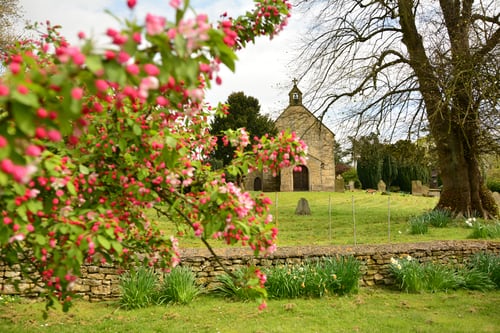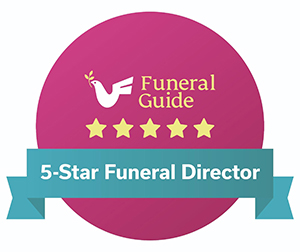Choosing grave markers and headstones is a huge decision. It’s the memorial that will stay in place for the rest of time, if not at the very least for decades. It’s a decision that uses emotion, practicality and maybe needs family members to compromise too.
There are different reasons for your choice too. Some people will choose to have a grave marker, such as a plaque, as a permanent memorial. Others might only need something to mark a graveside until a more permanent solution is put in place.
How Much Are Grave Markers?
The cost depends on the quality and detail involved. A simple wooden marker that’s being placed as a temporary memorial at the side of a grave might cost around £20. And it’s certainly not unheard of for people to create their own temporary grave markers. Remember, if your marker is being replaced at some point, in the early stages you just need a tribute, where family members can come and visit to pay their respects.
Once a funeral has taken place you may, for example, see markers that use a photo frame and picture of the deceased with some basic details inside. As long as you meet the regulations of the cemetery or churchyard it can be done fairly quickly and for some it’s part of the grieving process.
One thing to consider, if you are creating your own temporary grave marker or memorial, is that whatever you create will be exposed to the elements until something permanent is placed.
It can take six months before the earth has settled enough to take the weight of a headstone or other permanent grave marker. So, whatever your temporary solution is, it’s likely to be there for a period of time.
Headstones as Grave Markers
When you come to choose something more permanent the cost will depend on type of material, shape and how much engraving is required. You can add extras such as a vase for flowers. This gives you not only an area to place cut flowers and keep them tidy, but an extra face for engraving too.
Choosing bespoke artwork or a photo-plaque are other ways of creating a unique and highly personal graveside memorial. If you’re immediate family you’ll know the kind of grave marker your loved one would want. They might have even left details in their will, so it’s worth checking there first.
Memorial Plaques as Grave Markers
It’s also fairly common for families to place a plaque on a wall of remembrance inside a cemetery, if a cremation has taken place
Sometimes known as flat headstones, memorial plaques are also found at gravesides instead of more traditional headstones.
Naturally plaques are smaller, so when thinking about your plaque one of the key parts is the epitaph. The epitaph is the wording that pays tribute to the deceased on headstones, plaques and other grave markers.
Alongside the name of the deceased, you’d normally find the date they passed away and their age. A date of birth is sometimes included. This will be followed by a line of highly personal text, or quote (relevant to the deceased’s faith).
If you want a starting point for your epitaph our brochure has some suggestions for a heartfelt introductory message for your marker. Just download our brochure.
Are there Restrictions to Placing a Grave Marker or Headstone?
In the UK the laws are strict about who can and can’t place headstones. Strictly only the person with the Deed of Grant to the plot can place headstones or other memorials. The holder of the deed is legally entitled to remove any grave markers that were not put there without their consent.
Churchyards and cemeteries also have their own set of rules and regulations. They’ll cover things like appropriateness of epitaph wording, particularly in churchyards and cemeteries of specific religions, type of headstone or grave marker and the materials that can be used.
Our page on memorials has more details on the regulations for churchyards and the local cemeteries in South East Essex. In general, cemeteries allow a wider range of memorials and grave markers than a more traditional churchyard.
Does a Grave Marker Have to be at the Head or Foot?
Most grave markers are placed at the head of the plot. There are no laws around this, although the individual cemeteries and churchyards may have their own regulations. For religious reasons there may be certain requirements when placing a memorial, and some don’t place grave markers or memorials at all.
Buying a Plot in Advance
You or a loved one may have already covered the practical details with a funeral finance plan, but many people are also choosing to buy their plot in advance too. The simple reason behind this is that space is at a premium, so people are securing their plots in advance and in the areas they want to be buried (because like housing funeral costs differ depending on where you want to be placed).
The S Stibbards and Sons Approach to Your Grave Marker
Deciding on a grave marker can take some time and at S Stibbards and Sons Ltd, we understand that your ideas may not be fully complete straight away. It can take months. That’s why we listen to what you want, your thoughts and ideas to help you through the whole process. It’s a time of reflection and can be upsetting, but for many it also helps work through the grief of loss.
For memorials we work with Odlings Memorials, one of the UK’s leading suppliers of memorials to the funeral industry. Established in 1870 Odlings are award-winning specialists in the production of truly personalised memorials.
Their innovative memorial solutions set the standard.
Making these decisions can be hard while you’re working through grief and loss. But our experienced team is there to offer help and guidance to help make things a little easier. If you would like to discuss any element of your funeral plans creating a memorial, please get in touch with our friendly team.







